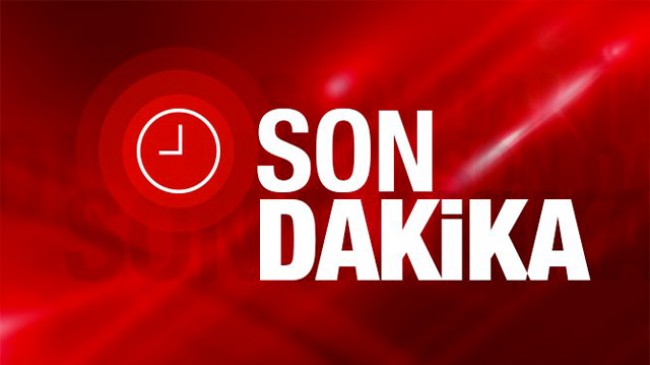Withdrawal symptoms typically begin within six to 24 hours after the last drink. The peak intensity of withdrawal symptoms, including seizures in severe cases, usually occurs within 48 to 72 hours. Symptoms may gradually subside, but psychological symptoms like anxiety and cravings can persist for several weeks. Urticaria, also known as hives, is another skin symptom that sometimes appears during alcohol withdrawal. Hives usually appear as raised, red, itching welts, which can vary in size and form. Stress, which is common during withdrawal, can cause them, or they can be an indication of an allergic response.
Short-term effects
Eczema is a chronic inflammatory skin condition characterized by dry, itchy patches on the skin. Drinking alcohol can trigger eczema flare-ups in some people, possibly due to its dehydrating effects on the body. The exact cause of alcohol-induced rashes is not fully understood, but it is believed to be related to the body’s reaction to the toxic byproducts of alcohol metabolism. When the liver breaks down alcohol, it produces acetaldehyde, a toxic substance that can damage cells and tissues in the body, including the skin.
Uncover the factors that drive success in the battle against addiction. Discover how to help an alcoholic, from understanding their struggles to effective recovery strategies. Alcohol withdrawal can be a dangerous and even life-threatening experience, especially for those who have been drinking heavily for a prolonged period of time. From understanding signs to creating a supportive environment, be their guiding light.
Substance Use, Abuse, and Chemical Dependency: The Differences
This allergy-like reaction usually happens within an hour of drinking. substance use group activities It’s common in people who also have asthma, sinus disease, or problems with aspirin and other nonsteroidal anti-inflammatory drugs (NSAIDs). Your doctor can help by slowly getting you used to aspirin, which should ease your symptoms. One of the earliest signs of alcohol abuse is a persistently red face due to enlarged blood vessels (telangiectasia). This appears because regulation of vascular control in the brain fails with sustained alcohol intake. Space alcoholic beverages with a glass of water to mitigate the risk of dehydration while drinking alcohol.
Simply add a cup of colloidal oatmeal to your bathwater and soak for minutes. Soaking in an oatmeal bath can also be helpful for soothing itchy or irritated skin. Oats contain compounds called avenanthramides, which have anti-inflammatory properties. Li, Suyun; Cho, Eunyoung; Drucker, Aaron; Qureshi, Abrar; Li, Wen-Qing.
While alcohol consumption doesn’t directly cause eczema, it can worsen existing symptoms and trigger flare-ups in some what does being roofied feel like people. Rosacea is a skin condition that causes redness and flushing on the face. While the exact cause of rosacea is unknown, alcohol consumption is thought to be a trigger for many people with the condition. Alcohol-induced skin reactions can stem from a genetic inability of the body to process alcohol properly. This inability is especially common in people with East Asian ancestry, who may experience extreme redness and warmth in the skin after consuming even small amounts of alcohol. Alcohol use can also cause various skin reactions, including rashes.
If a person drinks alcohol regularly, the short-term effects, such as dry skin and flushing, are more likely to become a persistent problem. Because of this, drinking alcohol can cause dehydration, which may affect a person’s skin. Many of the long-term effects of alcohol on a person’s skin happen as a result of AUD. However, prolonged alcohol use can cause other complications that affect the skin, such as liver disease. Frequent and excessive drinking can lead to several problems with the skin including flushing, reduced elasticity, and dryness. Experiencing physical or psychological symptoms when not drinking is a clear sign of alcohol dependence.
These programs may work for people who have not been drinking heavily for long and have a strong support network outside of a treatment center. Clients usually have the option to switch to an inpatient program if they are at risk of relapse. After detox, clients usually enter an inpatient or outpatient rehab program. Residential programs may be appropriate for clients who have been drinking for a long time, have tried treatment in the past, or need more structure to prevent relapse.
These rashes commonly appear on the face, neck, and other areas exposed to alcohol. Understanding the link between alcohol and rashes is essential for individuals who may have alcohol sensitivities or allergies. By recognizing the symptoms and seeking appropriate medical advice, individuals can better manage their health and make informed decisions regarding alcohol consumption. Another common alcohol-related rash is the alcohol flush reaction, also known as the Asian flush or Asian glow. This reaction is more prevalent in individuals of East Asian descent and is characterized by redness, warmth, and flushing of the face, neck, and chest after consuming alcohol.
Flushing
In many cases, simply stopping the intake of alcohol allows the breakdown process to occur and symptoms will resolve on their own. Alcohol may leave the body more slowly (or more quickly) in certain people compared to other people. Some cases of alcohol-related skin reactions may not be caused directly by alcohol itself, but because of the impurities present in the alcohol.
Although alcohol-related skin reactions can be bothersome or uncomfortable, the vast majority are not life-threatening. As the alcohol is broken down and eliminated from the body, the symptoms generally go away. In general, alcohol does not cause rosacea, but it can trigger rosacea symptoms in some people. A 2017 study of American women found that the risk of rosacea increased as alcohol intake increased, however, other studies have not found the same association.
Explore the hidden perils of driving under the influence of prescription drugs and ways to prevent it. Detect child vaping through physical symptoms, behavioral changes, and signs in appearance. Navigate the stages of addiction and learn effective strategies for overcoming this challenging journey. Taking an oatmeal bath can help relieve itching and soothe irritated skin.
- This can make the skin more susceptible to irritation, inflammation, and the development of rashes.
- If thinking about alcohol takes up a lot of your time, seeking help is essential.
- Transient flushing is also a common side effect of alcohol, particularly in heavy drinkers.
EFFECTS OF ALCOHOL ON FACE
Medical professionals may prescribe medicine to help with withdrawal symptoms, stop seizures, or treat another medical condition. When dealing with an alcohol withdrawal rash, it’s important to treat both the skin problem and the withdrawal symptoms. Make sure to consume enough water during withdrawal since dehydration worsens skin troubles. Also, do your best to avoid scratching; it will make famous people with fetal alcohol syndrome the rash worse and can even cause skin damage. To avoid nighttime scratching, trim your nails, and consider wearing cotton gloves to bed.
Demystifying the complex topic of physiological dependence – learn causes, symptoms, and recovery strategies. Drinking 12 beers a day can have severe and lasting impacts on your physical health, mental well-being, relationships, and financial stability. Stay vigilant, spot the clues, and help them find the path to recovery. Discover the power of vaccinations for recovery, from COVID-19 to preventing disease outbreaks. Uncover 10 inspiring ways to take care of your mental health, from social bonds to mindful eating.




